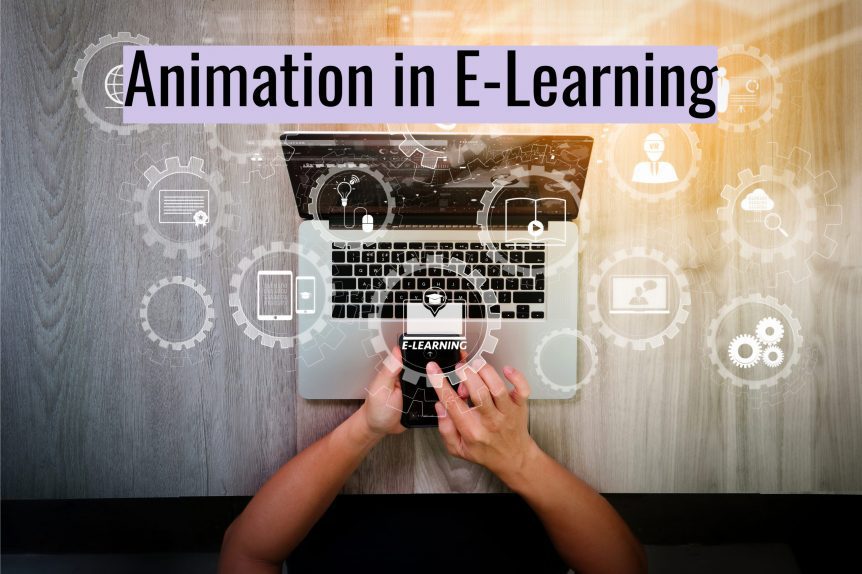Tips for Using Animation in E-Learning
In a previous blog, we looked at the many benefits of including animations in your e-learning courses. You can’t just add any animation, however. To get the best results, you need to ensure you follow industry best practice standards.
The following tips for using animation in e-learning will help.
Focus on a Specific Topic
It is best to keep the animations that you include in e-learning courses to a single topic. They can be complex topics, but you should avoid trying to cover too many things in a single animation.
This ensures the animation is no longer than it needs to be, plus it provides a better learning experience as you are not throwing a lot of things at the learner at once.
Keep it Tight – Animations Are Not the Place for Heavy Detail
You can get a lot of information into an animation, even one that is less than a minute long. However, you shouldn’t add too much detail on a topic. Examples of too much detail include having lots of text on the screen or when the animation is too long.
The better approach for complex topics that require detail is to use an animation to introduce the concept, giving learners a foundation of understanding. You can then expand further using other types of content, such as text-based content or a scenario.
Get the Tone Right
If the topic of your animation or course is energetic and fun, your animation should be energetic and fun too. On the flip side, if the animation is on a dangerous safety issue or another serious topic, energetic and fun may not be the right tone.
Select an Appropriate Style
There are different styles of animation that you can include in an e-learning course: 2D, 3D, hand-drawn, etc. Choose the one that best fits the topic you are covering and that also matches the overall design of your e-learning course. This will avoid the animation appearing out of place.
Create a Story
Animations work best when they are engaging and when the learner can relate to them. Therefore, it helps to create a story and then to use that story to explain the concept or topic.
Creating characters can help with this too. An example would be introducing a character, outlining a problem the character is facing, and then solving the problem using the skill or information that is the topic of the animation.
Be Careful with Humour
While creating characters and stories can make animations engaging and interesting, humour is challenging to get right. People have very different senses of humour, an issue which is exacerbated even further if your e-learning course and animation will be viewed by people in different geographic locations.
People not finding the humour in your animation amusing is only one issue, though. A more important one is causing offence through humour, even when that offence is unintentional.
In most situations, it is best to leave out the humour or, at the very least, to tread very lightly.
Avoid Colloquialisms
It also best to avoid colloquialisms, slang phrases, and cultural references that some people completing your e-learning course and watching the animation won’t understand. Again, this has particular relevance if some of your learners are in different locations.
For example, a learner in the UAE may not understand a colloquialism or cultural reference that is commonly known in Saudi Arabia and vice-versa.
Include Audio, Ideally Narration
Animations are primarily visual elements, but they work best with audio. This can mean music backgrounds, but the best results are usually achieved with the inclusion of narration.
The narration script can help with the learning process, explaining and adding context to the information that is on the screen. Adding narration to your e-learning animations can also make them more personable and relatable for learners.
One final thing to point out in relation to audio: don’t go overboard, especially with background music volume and sound effects. Too much, overbearing, or interruptive audio is never good.
Add Captions or Subtitles
Captions or subtitles have two main purposes. The first is for accessibility so that learners with hearing difficulties can still fully benefit from the animation.
The other is to give all learners the option of watching the animation without sound. You can’t assume that learners will always be able to have the sound turned on as they may be in a location where the sound would be disruptive. They can still watch the animation, though, if it has subtitles or captions.
Give the Learner Control
Give the learner control of the playback of the animation. This includes the ability to pause, increase the size of the screen, change the volume, and mute the audio. Without these controls, you risk frustrating and annoying learners.
The above controls can even help the learning experience by, for example, letting the learner pause the animation or go back over a section they didn’t properly understand the first time.
Make Animations Interactive
The final tip is to make your e-learning animations interactive. Most animations are passive where learners simply watch them. You can take this to another level, however, by adding interactive elements. This will also increase levels of engagement.
Making the Most of E-Learning Animations
Properly planning your e-learning animations as well as using an experienced e-learning developer will ensure the best results. This includes better knowledge retention and outcomes for your e-learning course, as well as improved return on investment.
